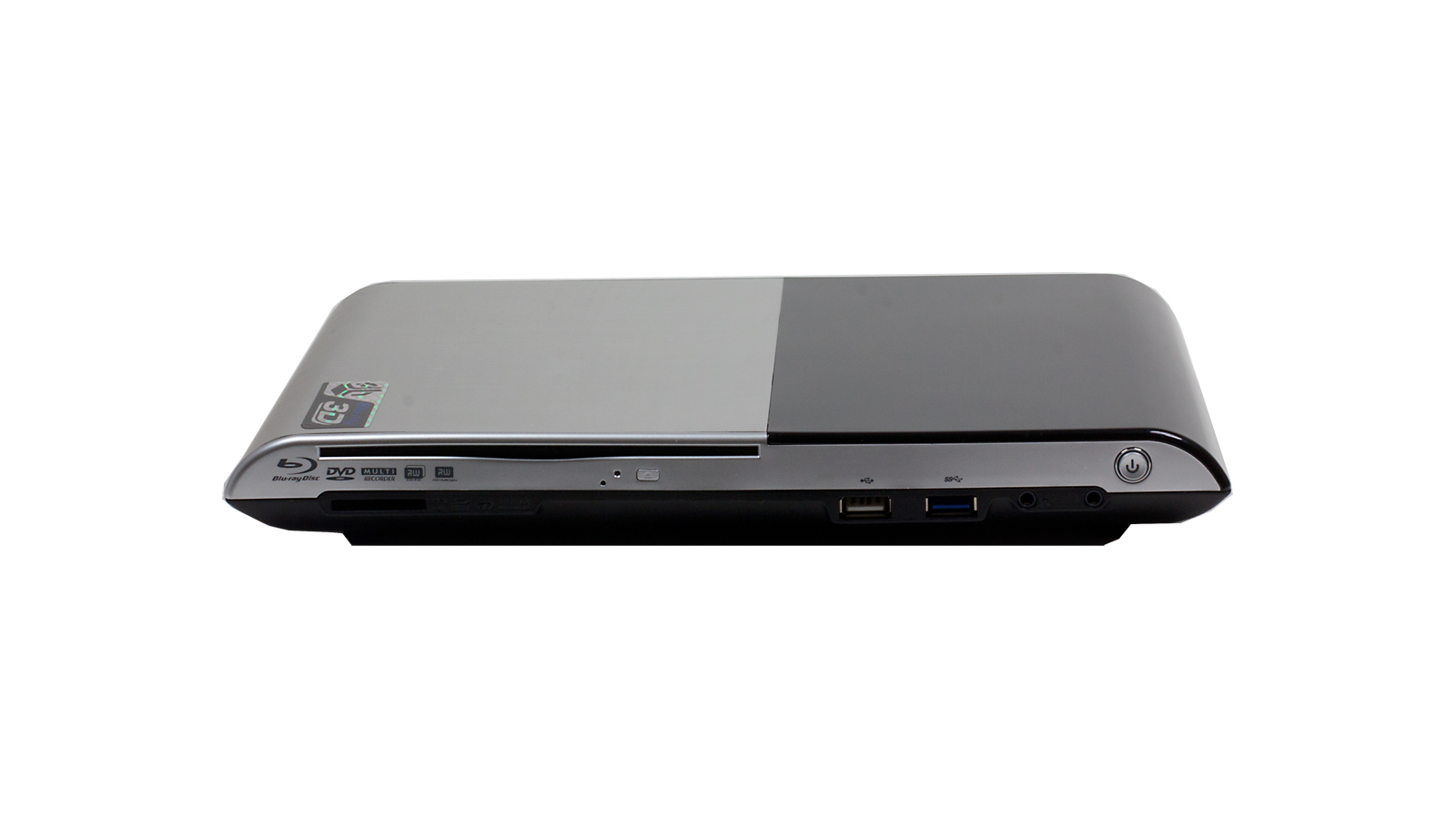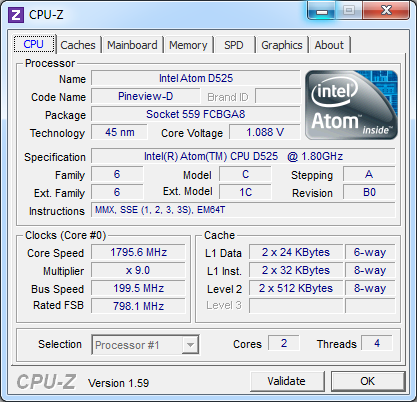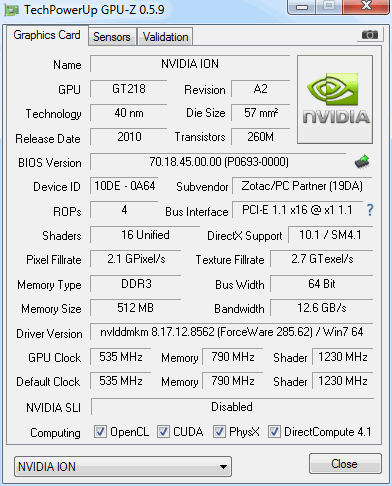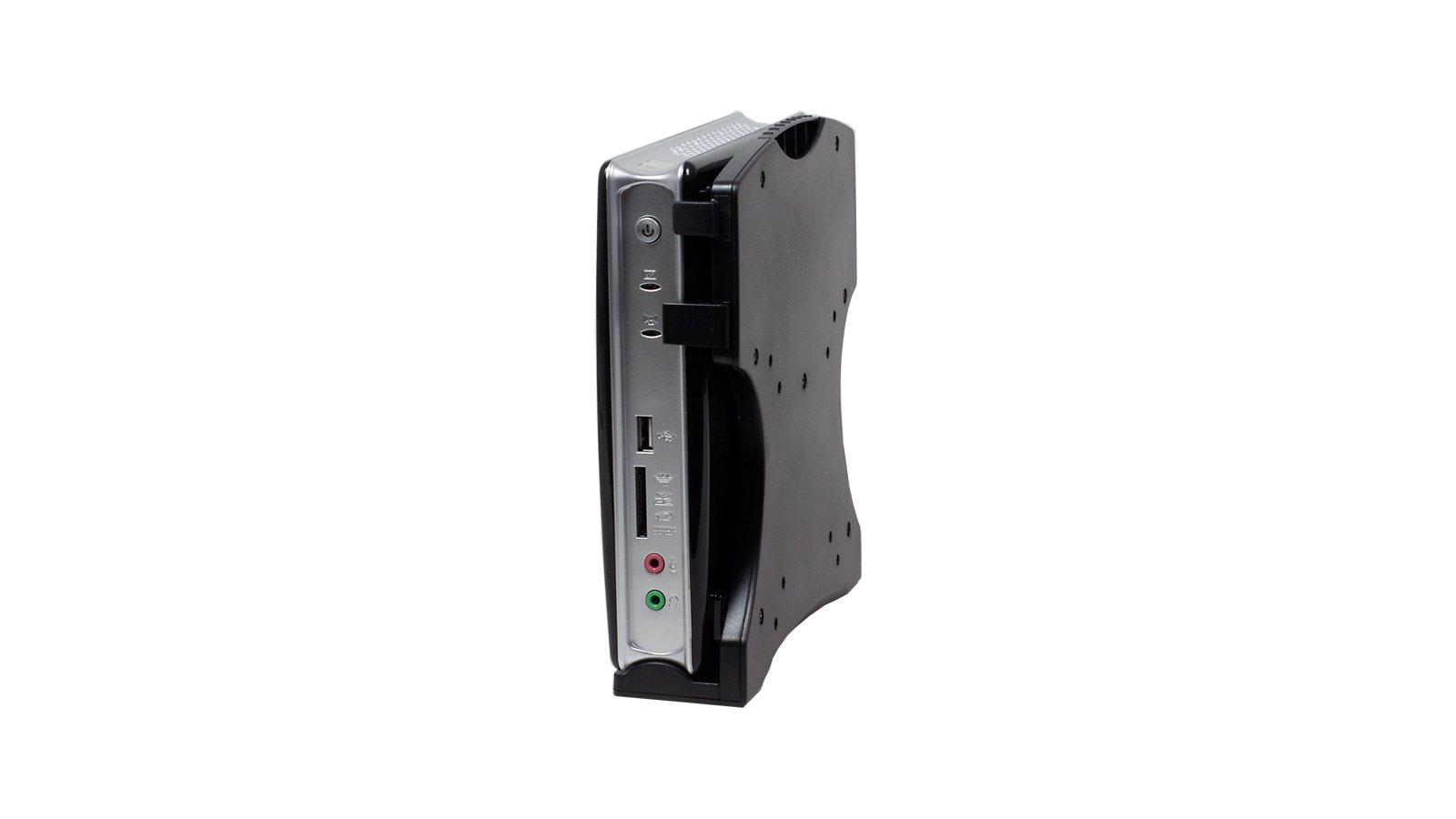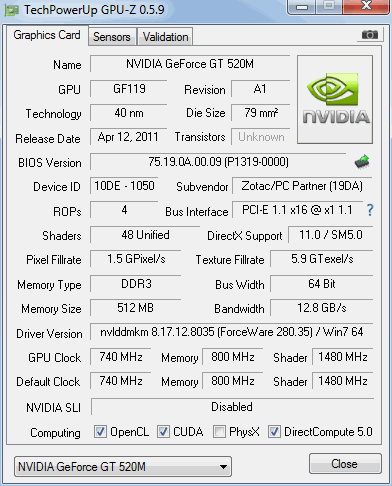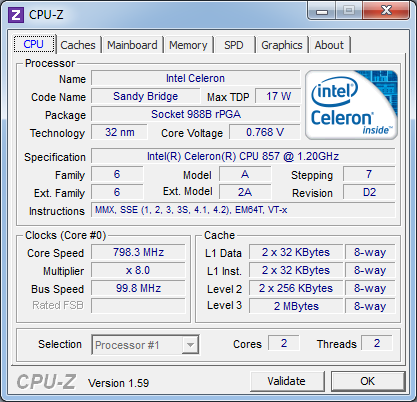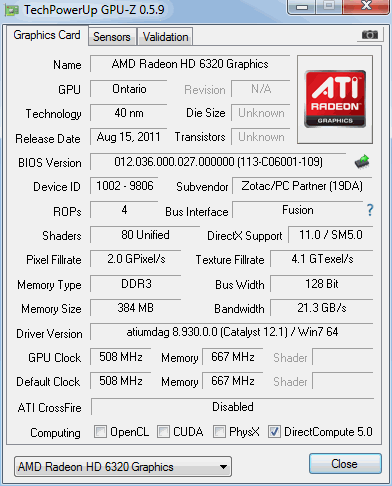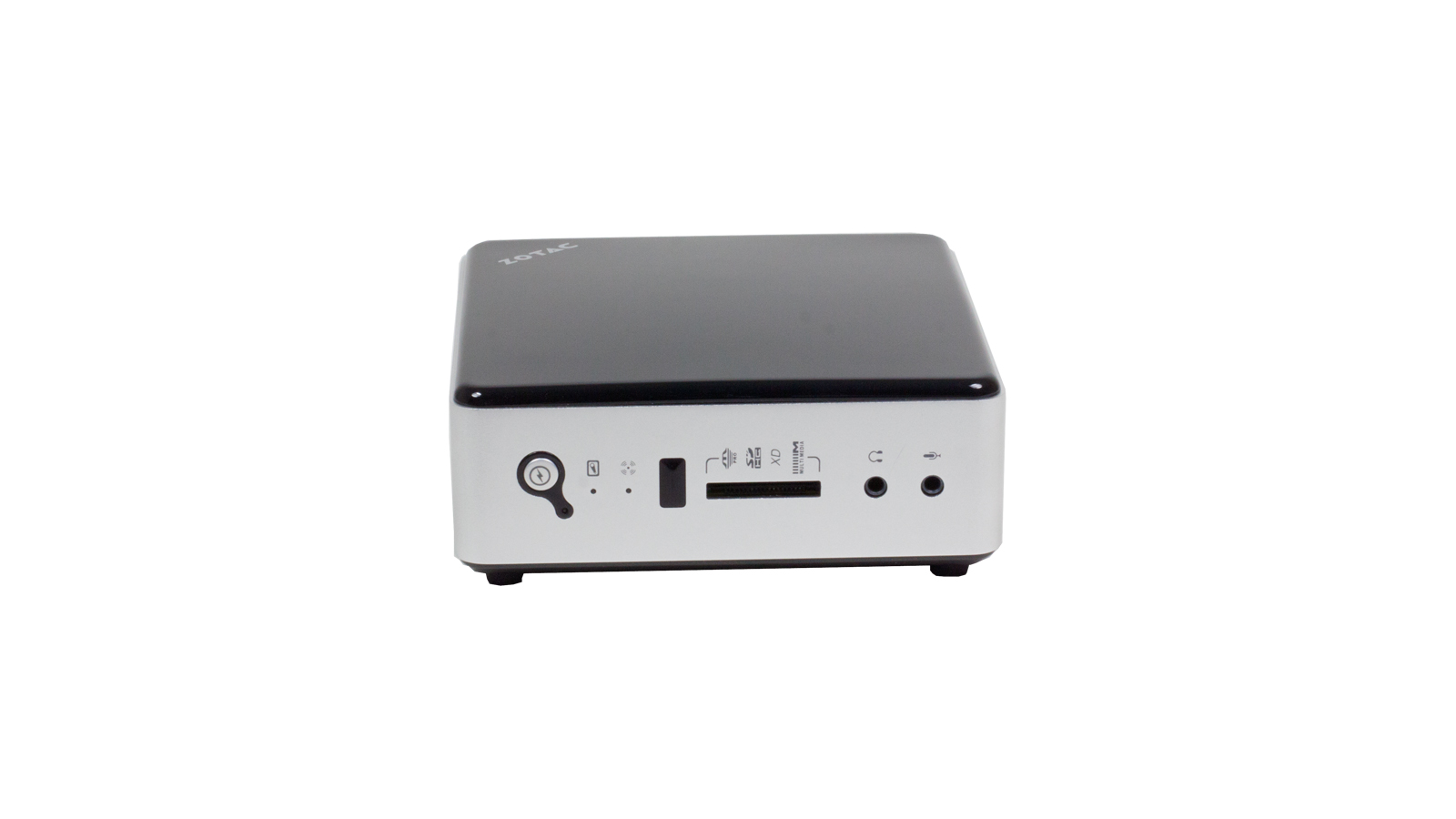Good Things In Small Packages: Seven Nettop Platforms, Tested
It'd be easy to dismiss nettops as underpowered attempts at miniaturization, but they’re good enough for surfing the Web, writing emails, and watching some video. Today, we're comparing seven different platforms based on CPUs from Intel, AMD, and VIA.
Sorting Through The Specs: Seven Nettops, Detailed
Again, we have seven different nettops here. And while our focus is on the technology inside each one, we do want to introduce the models provided by Zotac. The company sells its Zboxes in two versions. The first is a barebones configuration to which you have to add your own storage and memory. The other bears the "Plus" designator, and includes 2 GB of DDR3 memory and a Samsung 320 GB hard drive (250 GB in the case of the Blu-ray model). Neither comes with an operating system, so be sure to add software into your budget. Zotac sent us the Plus versions of each nettop, allowing us to test the configurations as they were provided.
Interestingly, all of Zotac's nettops sport a USB 3.0 controller driving two ports, Wi-Fi, gigabit Ethernet, and digital audio output. Aside from the model sporting a Blu-ray drive, they also all come with Bluetooth, a MCE-compatible remote control, and VESA mounting options for attaching the Zbox behind your flat-screen display.
Zbox Blu-ray
The first of our four Intel-based platforms, the Zbox Blu-ray 3D ID36 Plus is what most people consider typical of a nettop platform. It features Intel’s Atom D525, which sports two cores, plus Hyper-Threading, operating at 1.8 GHz. It's complemented by Intel's relatively old NM10 chipset, saddled by SATA 3Gb/s storage connectivity and first-gen PCI Express support. Then again, modern interfaces aren't really necessary, since the platform hampers the performance of higher-end peripherals anyway.
Graphics have never been Intel’s strong suit, and Zotac knows this. Instead of relying on the Atom processor's anemic GMA 3150 engine, it leans on Nvidia's better-balanced GT218, more commonly known as Ion 2.
Peripherals can be attached to the Zbox via a pair of USB 2.0 ports or a couple of third-gen connectors. Additionally, one of the USB 2.0 ports doubles as an eSATA interface. Display output options are purely digital; choose between HDMI and DVI.
Given the platform's seeming utility in an HTPC environment, we really wonder why it doesn't include a remote control. Also, placing audio outputs on the front of the enclosure seems like a messy choice. On the other hand, there is a digital optical output on the back of the unit, giving home theater buffs an option other than HDMI for getting audio from the Zbox.
Get Tom's Hardware's best news and in-depth reviews, straight to your inbox.
Zbox
The Zbox ID80 Plus hosts Intel's modern Cedar Trail-based Atom CPU (specifically, the D2700). Its two Hyper-Threaded cores operate at 2.13 GHz.
Unfortunately, the company again leans on its older NM10 chipset, saddling a new processor with all of the previous generation's I/O deficiencies. Not surprisingly, then, Nvidia makes another appearance as Zotac's GPU vendor of choice. The company employs the GeForce GT 520M, an entry-level chip from Nvidia's mobile portfolio.
Overall, this form-factor affords Zotac slightly better connectivity. Two USB 3.0 ports are still present, but second-gen USB expands to include four ports (two around back, one up front, and one either on top of on the side, depending how the Zbox is oriented). HDMI and DVI display outputs cover the most popular interfaces. And again, we find audio jacks up front, which makes a lot more sense on a desktop-oriented platform like this one.
Next up, we have two almost-identical models based on derivatives of Intel's Sandy Bridge CPU architecture and HM65 Express chipset, the Zbox ID81 Plus and Zbox ID82 Plus. The first is equipped with a dual-core Celeron 857 running at 1.2 GHz, which lacks Hyper-Threading, while the second employs a mobile dual-core Core i3-2330M that operates at higher clocks and benefits from Hyper-Threading technology.
The processor you pick also affects integrated graphics performance. Intel's Celeron contains a pared-down engine called HD Graphics that is stripped of Quick Sync and Clear Video. The mobile Core i3 enjoys both capabilities, in addition to a higher graphics clock rate. Outwardly, both Zboxes are nearly identical to the ID80, with the only real difference being the ID82’s yellow USB ports that can charge attached devices, even when the system is powered off.
The Zbox AD04 Plus uses the same upright enclosure, but instead centers on AMD’s E-450 APU. Its two low-power Bobcat cores run at a conservative 1.65 GHz, but its graphics core is far more interesting. Dubbed Radeon HD 6320, the integrated GPU is able to overclock itself from a base frequency of 508 MHz to 600 MHz when additional performance is needed, and when the thermal budget permits. AMD's A50M (Hudson M1) chipset is much more modern than Intel's NM10, though it notably lacks native USB 3.0 support. Zotac addresses this shortcoming by adding a third-party controller.
There is only one minor connectivity detail that sets the AMD-based model apart from the Intel-oriented competition: instead of a DVI port, the Zbox AD04 includes DisplayPort.
Zbox nano
The Zbox nano AD10 Plus is even smaller. Measuring only 5 x 5 inches, this compact computer houses AMD’s E-350 APU. Its 1.6 GHz clock rate is only marginally slower than the flagship, but its integrated Radeon HD 6310 cannot accelerate beyond its nominal clock rate of 492 MHz in response to demands for more performance. Also, its memory controller tops out at DDR3-800, whereas the E-450 supports DDR3-1066 as well. As a result, we should only expect to see a performance delta when it comes to graphics performance or applications starved for memory bandwidth.
All of Zotac's nano models feature a card reader, two audio jacks (one for a microphone input, and one for a headphone output), an IR-receiver, and a built-in mic. Around back, we find two USB 2.0 and two USB 3.0 ports, a connector for the Wi-Fi antenna, a dedicated eSATA port, and an Ethernet jack. Again, you're able to choose between DisplayPort and HDMI output
Squeezed into the same nano enclosure as AMD's E-350, we find a rare VIA Nano X2 U4025. It runs at a nominal clock speed of 1.2 GHz, tying it with the much more modern Celeron 857 for the lowest frequency.
The accompanying VX900H chipset is fairly old, similar to Intel's NM10 (both are roughly on the same level, technology-wise). VIA's core logic incorporates a graphics engine of its own called Chrome9 HCM, a DirectX 9-class GPU capable of basic hardware-accelerated video decoding. According to VIA, H.264, MPEG-2, MPEG-4, WMV9, and DivX up to 1080p are among the supported formats. You might be tempted to dismiss the Zbox nano VD01 Plus based on its rather dated hardware. But as our benchmarks will show, you’d be wrong.
| Tech Specs: Nettop Platforms by Intel | |||
|---|---|---|---|
| Model Name | Zbox ID81/82 Plus | Zbox ID80 Plus | Zbox Blu-ray 3D ID36 |
| Manufacturer | Zotac | Zotac | Zotac |
| Hard Drive | 320 GB | 320 GB | 250 GB |
| CPU | Intel Celeron 8572 x 1.2 GHzIntel Core i3-2330M2 x 2.2 GHz (Hyper-Threading) | Intel Atom D27002 x 2.13 GHz (Hyper-Threading) | Intel Atom D5252 x 1.8 GHz (Hyper-Threading) |
| Chipset | Intel HM65 | Intel NM10 | Intel NM10 |
| RAM | 2 GB DDR3-1333 | 2 GB DDR3-1333 | 2 GB DDR3-800 |
| Graphics | Intel HD GraphicsDirectX 10.1Intel HD Graphics 3000DirectX 10.1 | Nvidia GeForce GT 520M (GF119),512 MB DDR3, DirectX 11 | Next-Gen Nvidia Ion (GT218),512 MB DDR3, DirectX 10.1 |
| Audio | Realtek ALC892 | Realtek ALC892 | Realtek ALC888 |
| ODD | - | - | Slimtype BS-E DL4ETS USB Device |
| USB 2.0 | 4 (1 front, 2 back, 1 right) | 4 (1 front, 2 back, 1 right) | 2 (1 front, 1 back) |
| USB 3.0 | 2 (2 back) | 2 (2 back) | 2 (1 front, 1 back) |
| Display Outputs | HDMI, DVI | HDMI, DVI | HDMI, DVI |
| eSATA | - | - | 1 Combo USB 2.0 / eSATA |
| LAN | Gigabit LAN | Gigabit LAN | Gigabit LAN |
| WiFi | 802.11n | 802.11n | 802.11n |
| IrDA | yes, remote control | yes, remote control | - |
| Card Reader | SD(HC), MS(Pro),xD, MMC | SD(HC), MS(Pro),xD, MMC | SD(HC), MS(Pro),xD, MMC |
| Bluetooth | Bluetooth 3.0 | Bluetooth 3.0 | - |
| Tech Specs: Nettop Platforms by AMD and VIA | |||
|---|---|---|---|
| Model | Zbox nano AD10 Plus | Zbox AD04 Plus | Zbox nano VD01 Plus |
| Manufacturer | Zotac | Zotac | Zotac |
| Hard Drive | 320 GB | 320 GB | 320 GB |
| CPU | AMD E-3502 x 1.6 GHz | AMD E-4502 x 1.65 GHz | VIA Nano X2 U40252 x 1.2 GHz |
| Chipset | AMD A50M (Hudson M1) | AMD A50M (Hudson M1) | VIA VX900H |
| RAM | 2 GB DDR3-1066 | 2 GB DDR3-1333 | 2 GB DDR3-1066 |
| Graphics | AMD Radeon HD 6310DirectX 11 | AMD Radeon HD 6320DirectX 11 | VIA Chrome9DirectX 9 |
| Audio | Realtek ALC892 | Realtek ALC892 | VIA HD Audio |
| ODD | - | - | - |
| USB 2.0 | 2 (2 back) | 4 (1 front, 2 back, 1 right) | 2 (2 back) |
| USB 3.0 | 2 (2 back) | 2 (2 back) | 2 (2 back) |
| Display Outputs | DisplayPort, HDMI | DisplayPort, HDMI | DisplayPort, HDMI |
| eSATA | 1 eSATA | - | 1 eSATA |
| LAN | Gigabit LAN | Gigabit LAN | Gigabit LAN |
| WiFi | 802.11n | 802.11n | 802.11n |
| IrDA | yes, remote control | yes, remote control | yes, remote control |
| Card Reader | SD(HC), MS(Pro),xD, MMC | SD(HC), MS(Pro),xD, MMC | SD(HC), MS(Pro),xD, MMC |
| Bluetooth | Bluetooth 3.0 | Bluetooth 3.0 | Bluetooth 3.0 |
Current page: Sorting Through The Specs: Seven Nettops, Detailed
Prev Page You Don’t Need Six Cores To Surf The Net Next Page Three Nettop Form Factors, Taken Apart-
falchard I think this review is bias. Its missing the AMD small form factor benchmark. Any game.Reply -
A Bad Day JOSHSKORNIn all honesty, when it can run Crysis...I'll be impressed. Until then...alrighty.Reply
Well, if you run it in:
-320p resolution
-Directx 8
-All eyecandy off
You'll get around 5-10 FPS. -
bavman These things suck. Why would you dish out the $300-400 theyre asking for them? I recently built a file server that was basically a dumbed down tower with an g620 cpu, 4 gigs of ram for under $200 (excluding all the hdds). Throw in a $50 graphics card and it would dominate any of these nettops.Reply -
friskiest bavmanThese things suck. Why would you dish out the $300-400 theyre asking for them? I recently built a file server that was basically a dumbed down tower with an g620 cpu, 4 gigs of ram for under $200 (excluding all the hdds). Throw in a $50 graphics card and it would dominate any of these nettops.Reply
You pay for the size, power and niche factor in here,.. these are Nettops,.. you're not supposed to play AA or AAA games in here,. just browse the net,. watch movies and listen to music- as implied
-
Nintendo Maniac 64 What I really want to see is a nettop using AMD's 17w A6-4455M. Being a Trinity APU, it actually WOULD have enough grunt to run Crysis, and without it looking like crap to boot!Reply -
molo9000 Shame these still aren't good at H.264 decoding. They would make great HTPCs.Reply
The hardware decoding of the VIA chipset would be a killer feature, if there actually was some software that supported it. Seems like XBMC doesn't support it either. -
daglesj I rolled out a load of Ion 330 Asrock boxes a couple of years ago for business use. Customers still love their little black boxes. These were the early 1.6Ghz dual core Atoms.Reply
For work use (basically 95% of what 95% of the worlds computers users actually do in the REAL world) they work great.
There is more to life than endless benchmarking and Crysis.
